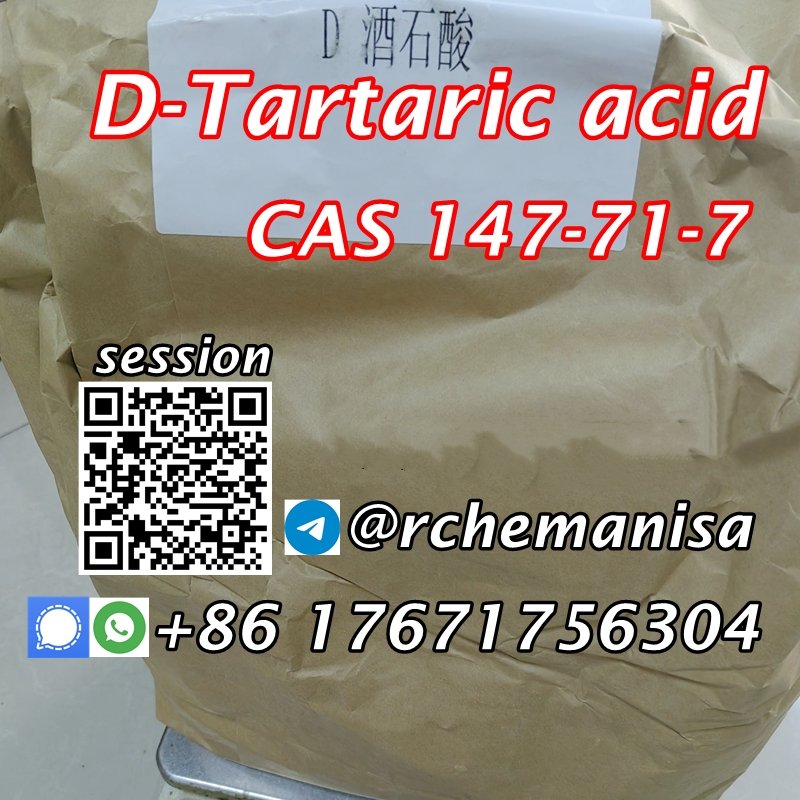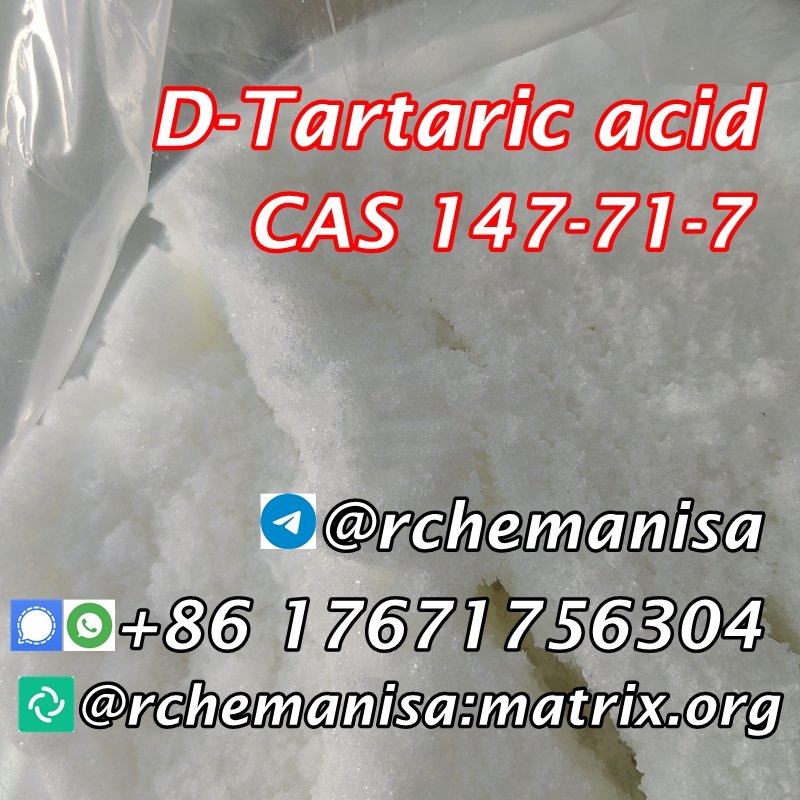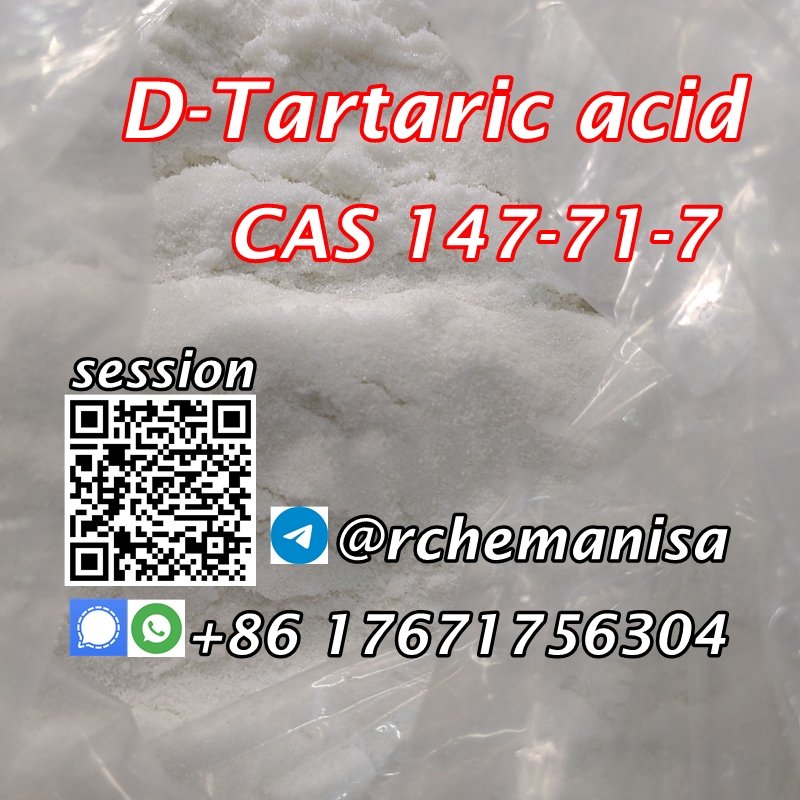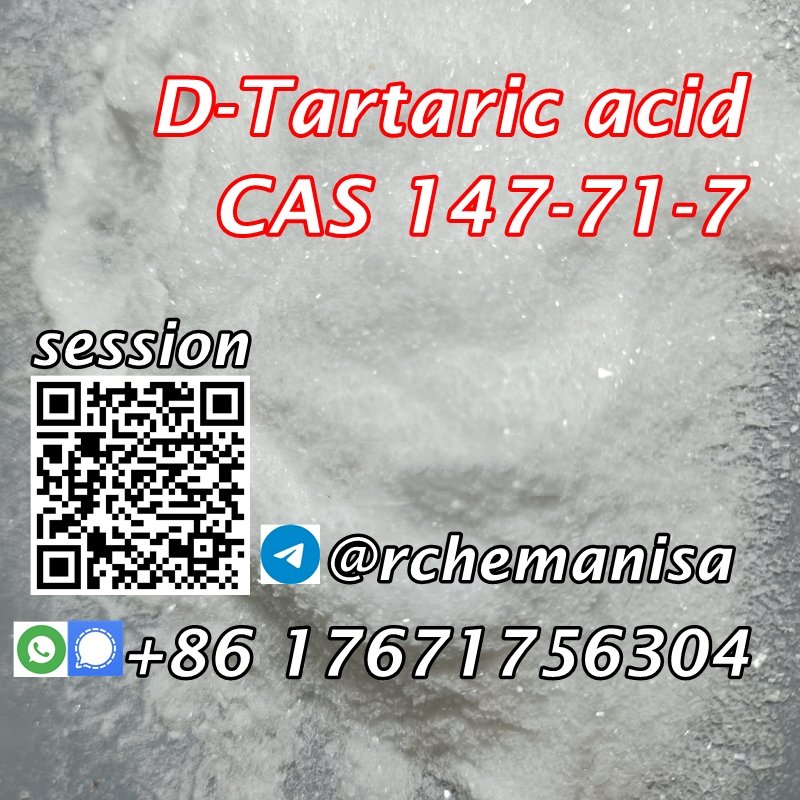D-Tartaric Acid CAS 147-71-7
D-Tartaric Acid C4H6O6 CAS 147-71-7, hot in Europe, Canada and Australia.
CAS 147-71-7 Basic Parameter
| Product Name | D-Tartaric acid |
| Synonyms | d-tartaric;tartaricacidd-minus;Tartarieacid;(S,S)-TARTARIC ACID;TARTARIC ACID;TARTARIC ACID, D-(-)-;TARTARIC ACID [DEXTRO (+)];TARTARIC ACID UNNATURAL |
| CAS NO | 147-71-7 |
| Molecular Formula | C4H6O6 |
| Molecular Weight | 150.09 |
| EINECS | 205-695-6 |
| Melting Point | 172-174 °C(lit.) |
| Boiling Point | 191.59°C (rough estimate) |
| Flash Point | 210 °C |
| Density | 1.8 g/cm3 |
| Storage Condition | Store below +30°C |
| Solubility | Water: soluble 100mg/ml |
| Appearance | White crystal or crystalline powder |
C4H6O6 Picture

What is the D form of tartaric acid?
Naturally occurring form of the acid is dextro tartaric acid or L-(+)-tartaric acid (obsolete name d-tartaric acid). Because it is available naturally, it is cheaper than its enantiomer and the meso isomer. The dextro and levo prefixes are archaic terms.
What is the use of D-tartaric acid?
Tartaric acid is widely used as an acidulant in carbonated drinks, effervescent tablets, gelatin desserts, and fruit jellies. It has many industrial applications—e.g., in cleaning and polishing metals, in calico printing, in wool dyeing, and in certain photographic printing and development processes.
What is the difference between L tartaric acid and D tartaric acid?
The main difference between L-tartaric acid and DL-tartaric acid is their optical activity. L-tartaric acid is optically active, meaning it rotates the plane of polarized light to the left, while DL-tartaric acid is not optically active because it is a racemic mixture of both L-tartaric acid and D-tartaric acid.
Why D and L tartaric acid is optically active?
It has two chiral centres. The two carbons with the ‘*’ marks are the chiral carbons. As we can see the above two isomers are mirror images of each other and are known as enantiomers. These are the 2 optically active isomers of tartaric acid.
Contact Anisa:
WhatsApp/Signal: +86 17671756304
Telegram: @rchemanisa
Element: @rchemanisa:matrix.org
Website:https://bmf-49851-31-2.com
Session: 05468ee84b6ca5c619560e29a92e664c358c08b4ea5c6c2d5d88f39e8c87dcb407







Reviews
There are no reviews yet.